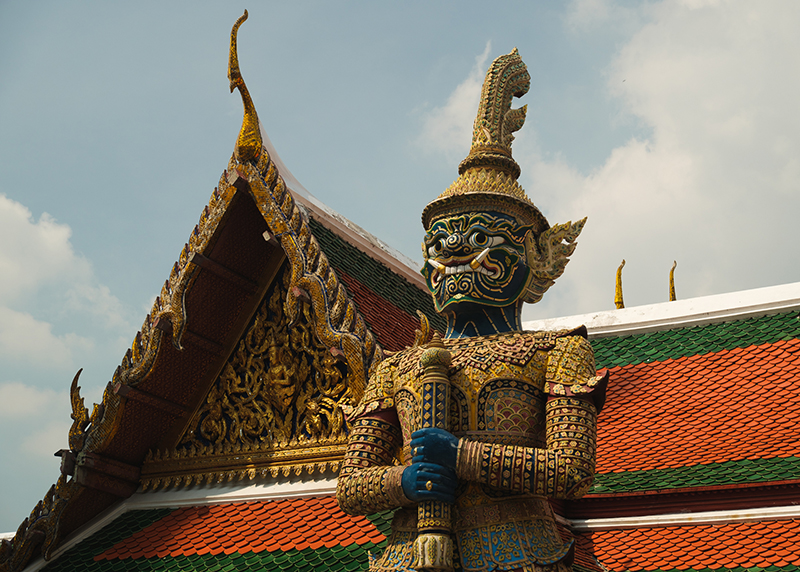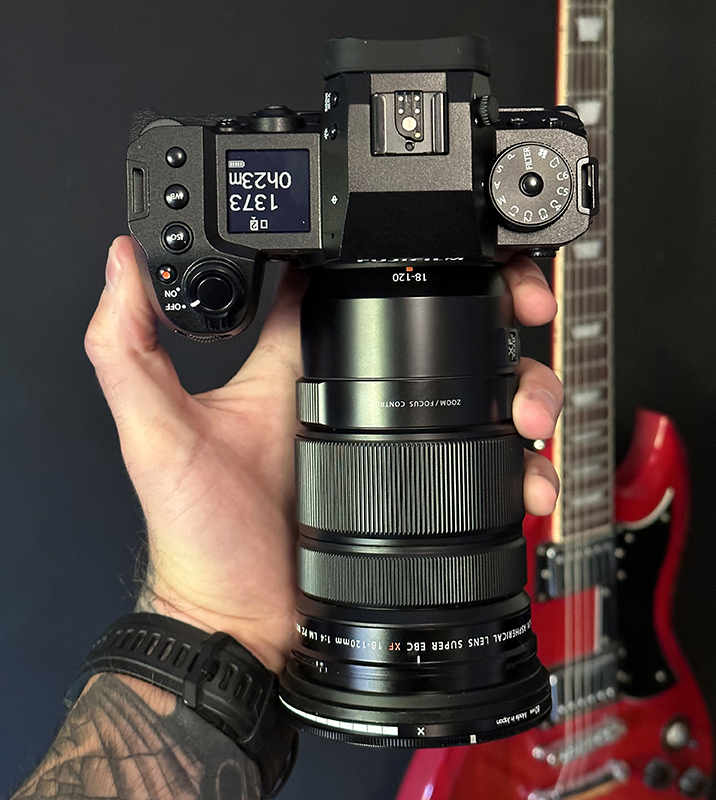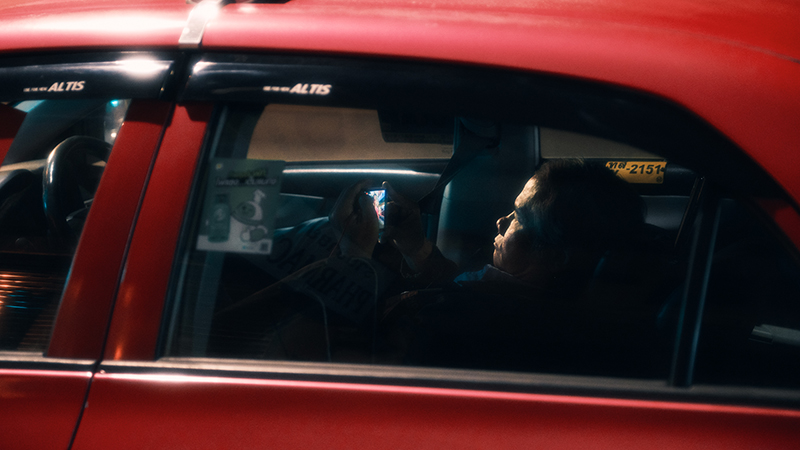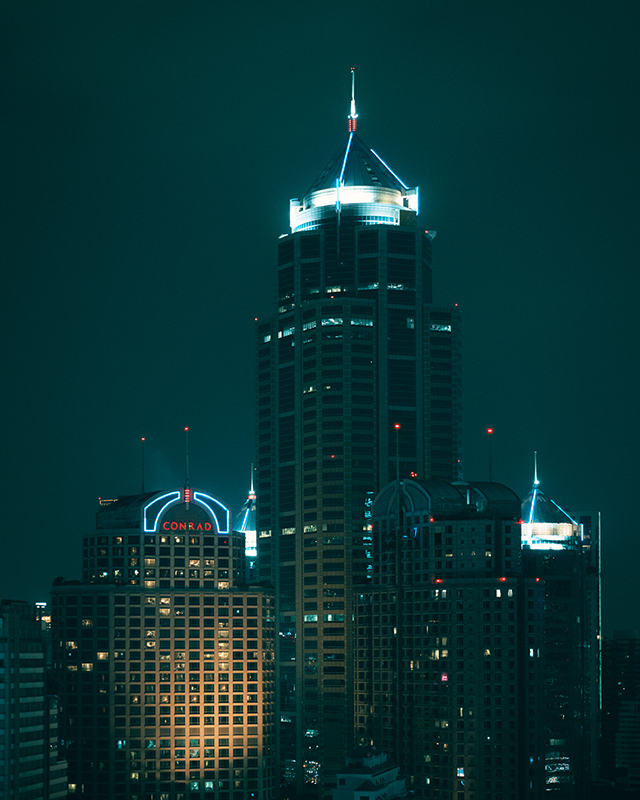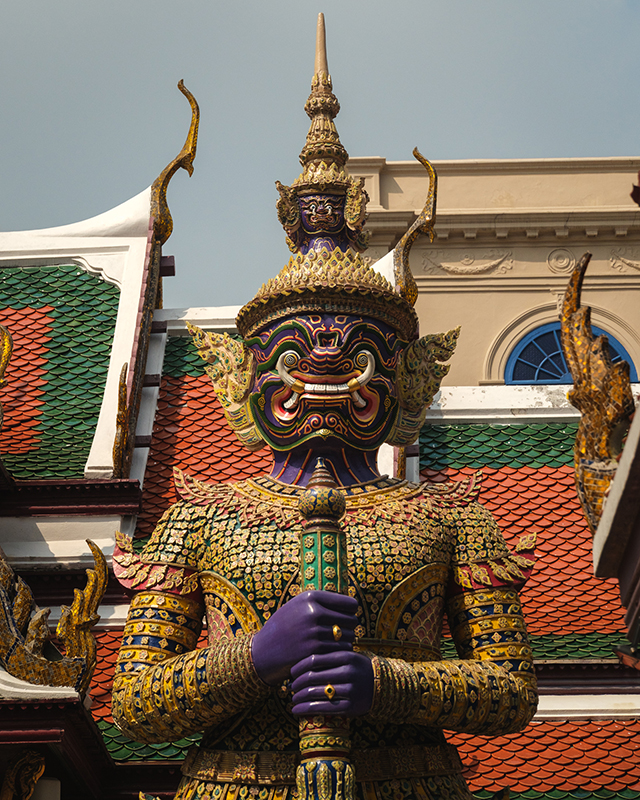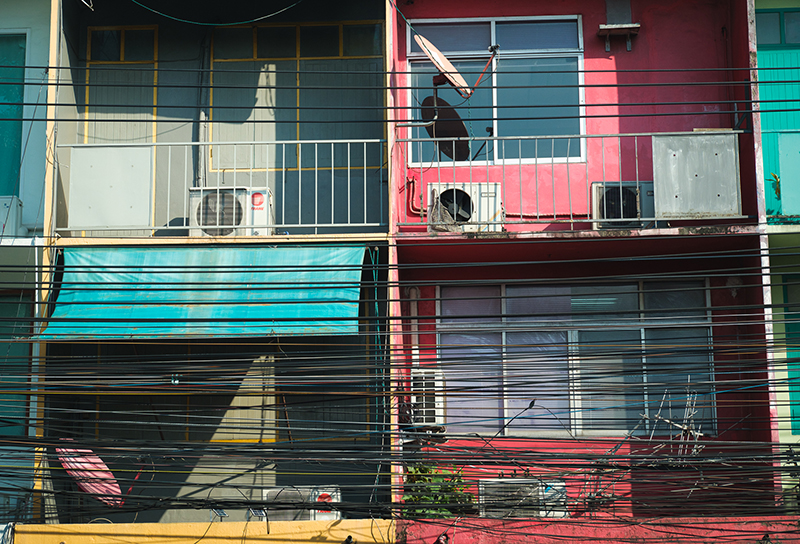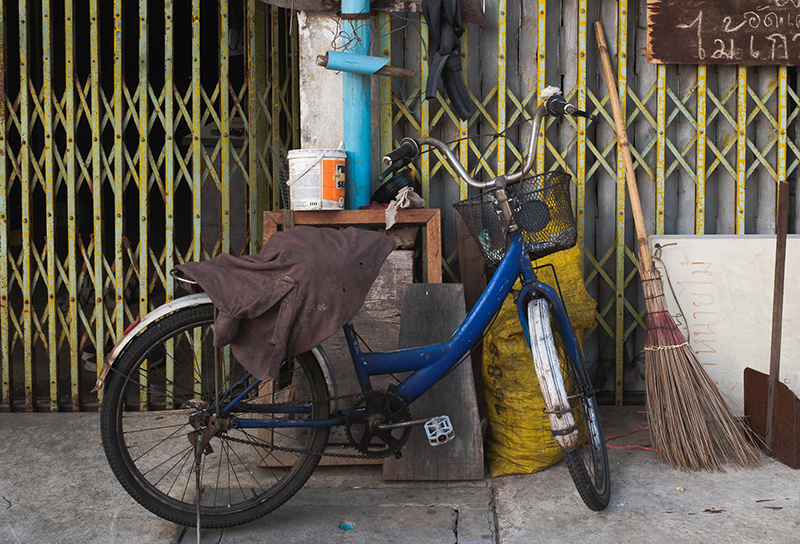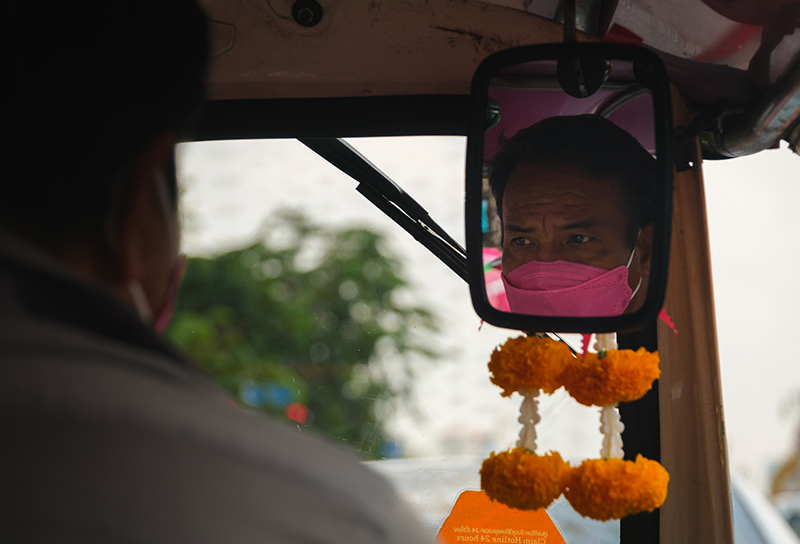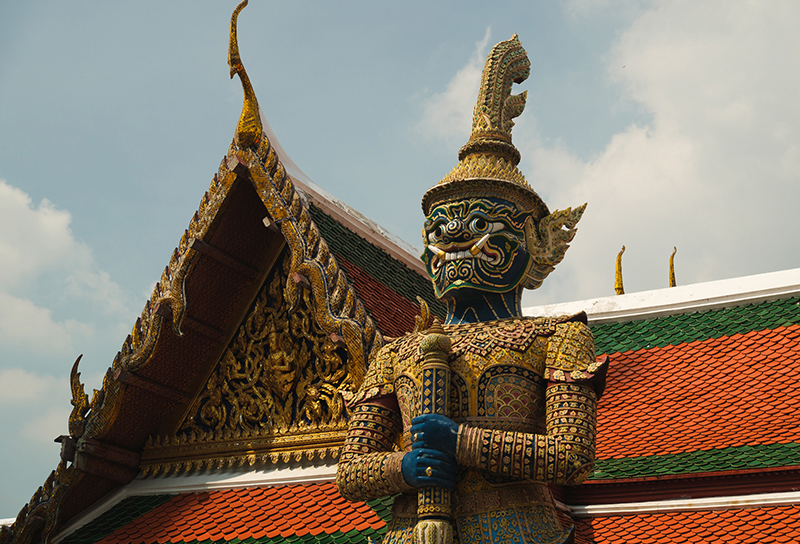Travel Photography with the Fujifilm X-H2
As a long-time Fujifilm user and previous owner of the original Fujifilm X-H1, I was very excited when Fujifilm released not only one but two brand-new Fujifilm XH2 cameras.
I was even more excited to be given the opportunity by Clifton Cameras to take the Fujifilm X-H2, along with the new Fujifilm XF 18-120mm power-zoom lens, with me on a trip to Thailand, and so in this post, I'll be giving my thoughts and experiences of using the Fujifilm X-H2 as a travel camera.
Click on any image in this blog to view it in full resolution!
Fuji XH2 Specs, Aesthetics & Build Quality
Firstly, let's touch upon the key specs of the Fuji XH2:
- 40 Megapixel X-Trans5 BSI Imaging Sensor
- 15fps in Mechanical Shutter
- Up to 8K/30P Video
- Up to 7 stops of IBIS
- 160MP pixel shift multi-shot
- 1/180,000 Max Shutter speed in E-Shutter
- 0.8x Magnification, 5.76Mil Dots EVF
- Up to 13+ stops of dynamic range
- F-Log2
The Fujifilm XH2 is a highly capable hybrid camera, meaning it does both videos and stills very well. In this post, I'll be mainly focusing on the stills element, as street photography was the main focus of my trip to Thailand.
As a Fujifilm X-T4 user, my initial impressions of the X-H2 from an aesthetical point of view were a bit mixed in all honesty. On the one hand, I appreciated how nicely it fit in my hand with the deeper grip and redesigned button layout for ease of use, but on the other hand, I did miss the manual control dials on the top in favour of a PASM layout. It’s not a deal breaker and I’m sure I’d get used to it if I made the switch from my X-T4 (something I am considering) but I’ll always have a soft spot for the manual control mode dials synonymous with the XT range amongst others.
Minor gripe at the PASM layout aside, the build quality of the X-H2 is as fantastic as you’d expect from a flagship Fujifilm camera. The large screen on the top is bright and easy to read, the buttons feel solid and I’m happy that they decided to stick with the flip-out screen which makes vlogging or shooting discreetly a lot easier to do!
The XH2 features environmental sealing, making it a weather-resistant camera body, perfect for travelling where the weather can be unpredictable. It also sports the NP-235 battery which means you can go out for a full day's shooting and not have to worry about the battery life – though it’s always a good idea to bring a spare.
Image Quality
If there is one reason and one reason alone to consider switching from your current Fujifilm APS-C camera to the Fujifilm X-H2, it would be the incredible image quality coming out of the brand new 40 Megapixel X-Trans 5 backside illuminated sensor.
Quite simply, the images coming out of this mirrorless camera are stunning. The camera offers such a jump to high-resolution results and the images are packed full of detail. With the X-H2 you’re getting images rich in colour and beautiful tones, something Fujifilm is well known and well regarded for.
Click the image to view in full resolution
Personally, I loved having the extra resolution when I was shooting street photos as I could focus on capturing the moment and worry about composition later by cropping in post.
I also loved how much you can push and pull the RAW files coming out of the XH2. For a lot of the shots I took, I didn’t take the edit much further than using the Provia film simulation and some basic edits in Lightroom. But there were a few shots that I really went to town on the RAW files to create highly stylised, cinematic-styled images and the leeway I had in the RAW files made that process easy!
Image Stabilisation
The Fujifilm X-H2 has improved in-body image stabilisation, promising up to 7 stops of stabilisation. This certainly came in handy for me as I like to travel light and on this occasion never took a tripod with me.
This meant shooting all of my photos and video with the X-H2 handheld and on non-stabilised lenses. I was impressed at how well the in-body stabilisation held up, allowing me to shoot these city skyline photos from the rooftop of our hotel handheld as low as 1/15s.
I also appreciated the stabilisation when shooting night street photography as it allowed me to keep my ISO down so as not to introduce unnecessary noise into my images.
Autofocus
One of my biggest gripes as a Fujifilm owner, having switched from Sony some years ago, is that they just aren’t on the same level of autofocus performance as some of the other brands. For what I do it’s not a major dealbreaker, I’ve learned to operate with my X-T4 and it’s sometimes finicky autofocus, but I’m glad to say that there has been a marked improvement in autofocus capability on the new Fujifilm X-H2.
Now, I didn’t test out the autofocus in its entirety including vlogging tests, for example, but I could notice straight away that it was a lot snappier, more accurate and hunted less than what I was used to with my X-T4.
Even in low light conditions when shooting some night street photography the X-H2 locked onto my subject with ease and made sure I didn’t miss the moment!
Paired With The XF 18-120mm Power Zoom
Another release from Fujifilm that I was lucky enough to take with me was the Fujifilm XF 18-120mm F4 LM PZ WR Lens. A versatile, lightweight piece of glass with an effective 35mm focal range of 27-183mm.
I found myself walking around the streets of Bangkok day to day with just this lens attached to the XH2. The versatility of the focal range allowed me to shoot everything from wide landscape-style street scenes to picking out details when zoomed in and isolating subjects with the constant F4 aperture throughout the focal range.
The image quality coming out of the lens was very impressive given its versatility and price point. I also had with me my Fujifilm XF 16-55mm F2.8, a well-regarded and high-quality lens, and yet in most cases, you’d find yourself hard-pressed to tell the difference between the two.
The only time I found myself swapping from the XF 18-120mm to the XF 16-55mm was during some night street photography sessions when I felt I needed the extra stop of light and depth of field afforded by the F2.8 aperture.
As a walkaround travel lens that offers high quality alongside versatility, you’d be hard-pressed to find a better option for Fujifilm at this price point.
Overall Thoughts
I was excited by the release of the Fujifilm X-H2 all these years after owning the original X-H1, and Fujifilm hasn’t disappointed.
In the X-H2, Fujifilm has created a highly capable, hybrid stills and video camera, capable of producing stunning images packed full of details and tones that Fujifilm are famous for. All in a small, lightweight camera body, at a price point that makes me wonder why you’d spend almost double the price for a full-frame alternative.
In my short ten days with the camera, I barely scratched the surface of what this body can do, but one thing’s for certain; it’s got my attention as a potential upgrade from my XT-4.
Fujifilm X-H2 Sample Gallery
Convinced Yet?
The Fujifilm X-H2 camera is available to buy now!
Read next
- The Incredible ISO of the Fujifilm X-H2
- All About the Fujifilm X-H2S
- Fujifilm GFX 50S II Review | A Landscape Photographer's Dream
Thank you!
Thanks for taking the time to read our blog, we really do hope they help you out and answer some of your questions. If you still have some unanswered, then please feel free to get in touch with our team of experts.
We have a LiveChat option on our website and we can, of course, be contacted via our email, we're also on the end of the phone too! Read more on how to contact us here >
Want to write for us?
If you've got experience with producing content on photo, video and/or optics products or techniques then we would love to hear from you. Contact our blog editor, Bea, with a sample of your work at [email protected].
- By Craig Pitts
- 6 Jan 2023




























































